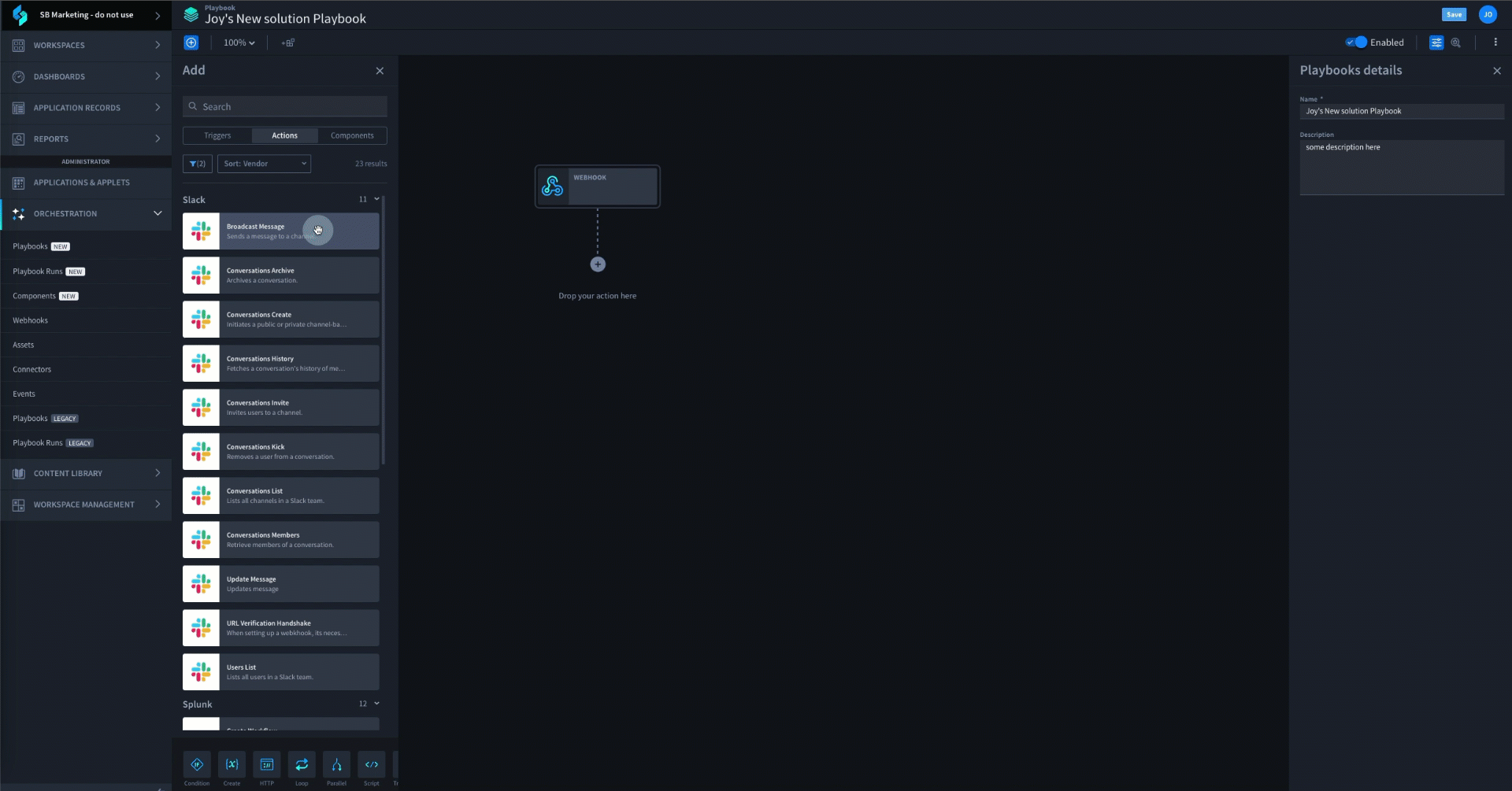In the fast-paced world of network connections, speed is the name of the game. And when speed is critical, automation is a must. Imagine it like a high-speed highway for data, where the closer it gets to its destination, the better your user experience. Now, behind this impressive data race is a powerhouse technology known as MPLS, or Multiprotocol Label Switching.
Today, we’re diving into the realm of MPLS and uncovering how it’s shaping the present and future of networking. What is MPLS, and how does it work? What does MPLS have to do with security automation? Hang tight as we unravel the evolution of MPLS and explore the key to a secure and efficient network infrastructure with an automaton twist.
What is Multiprotocol Label Switching (MPLS)? MPLS Role in Networking
MPLS stands for Multiprotocol Label Switching, a unique switching mechanism that goes beyond the usual network addresses.
And what is MPLS used for? Imagine MPLS as a GPS for data, optimizing the route through nifty labels to create the shortest path possible. The end goal? A network that runs like a well-oiled machine, thanks to MPLS’s systematic approach. It’s all about bringing some order to the chaos of network operations.
The Evolution of MPLS
As networking expanded and reached newer heights, so did MPLS networks. Its capabilities now cover a more extensive scope to enhance network performance further. But is MPLS still as relevant as before? Let’s answer that through a recollection of how this once-revolutionary technology shaped the current generation of networking.
How has MPLS improved networking?
In the early days of networking, there were prevalent challenges around how data is transferred through networks. MPLS stemmed from network traffic issues, from overloaded packet information to lengthy processes.
In the past, different technologies meant different packets. Due to the specifications, the level of translations was overflowing, and many deemed the older networking protocols like ATM as inefficient. Accordingly, IP switching emerged, a promising technology that fuses both ATM and IP functions. This eventually led to the formation of MPLS through the Internet Engineering Task Force Multiprotocol Label Switching.
Is MPLS still used?
The creation of MPLS was transformative. It altered how network traffic was transported, from the usual sluggish process due to the extensive encapsulation of cells and frames to a fast transfer by just looking at a set of assigned labels. While newer techniques have entered the scene, MPLS remains a force to be reckoned with due to its scalability, reliability, and the positive user experience it delivers.
What has replaced MPLS?
The relevance of MPLS has coursed through decades, and there’s no sign of it retiring or it being replaced. But with the constant changes in networking, other technologies unfolded to keep up with the trends. For example, SD-WAN took over in 2014 to manage traffic through centralized control across the WAN.
How MPLS Works
The ultimate goal of an MPLS network action is to simplify network performances with a focus on speed. There’s no configuring of addresses but rather an optimization of packets through labels. With a more specific direction, it improves how routers work. To better understand the architectural point of MPLS, here are the key attributes that define the technology.
MPLS Revolves Around Labels
Before MPLS, network traffic depended extensively on how the router determined each packet, from checking the IP address destination to examining the routing table. It’s a lengthy process, especially with various phases to consider. The introduction of MPLS led to the usage of label-switched paths, where each packet is labeled accordingly.
MPLS Works on Different Packets
MPLS simply determines a unique identifier with the help of the ingress router, which takes on the task of labeling each packet as it goes through the network. The Label Switch Router (LSR) then examines the traffic through the MPLS labels, not the entire IP address. Because of the unique identifiers, the technology creates more efficient traffic hopping, even when working with different packets.
MPLS Operates Between OSI Model Layer
The MPLS labels make its way between two Open Systems Interconnection (OSI) layers, namely:
- Layer 2: The network switch layer that operates from one port to another, enabling simple connectivity.
- Layer 3: The routing layer that enables switch and route. Its extensive scope makes this layer suitable for complex networks, including traffic routing.
Because MPLS encompasses both Layer 2 and Layer 3, it’s often considered as Layer 2.5.
SOAR vs. Security Automation for MPLS
Legacy security orchestration automation and response (SOAR) tools are known to be rigid and resource-intensive. With their heavy dependency on developers, it’s no wonder that they have been confined to the SOC and not associated with network security processes.
In contrast, AI-enabled security automation platforms have made automation more scalable, approachable, and extensible than ever before. The flexible and composable architecture of these platforms makes it possible for network security teams to benefit from the force multiplier that is security automation.
Top Automation Use Cases for MPLS
Security automation use cases extend beyond the SOC, and can provide many benefits to network operations center (NOC) teams too. Some common automation use cases for MPLS include:
- Quick and consistent MPLS VPN deployments
- Consistent configuration of network devices
- Scale VPNS for improved network operations
- Dynamically adjust VPN configurations to accommodate network configuration changes
- Fault detection monitoring and resolution
- Balance load traffic for network resource optimization
- Maintain security compliance requirements for MPLS VPNs
The Three Types of MPLS
As mentioned, MPLS achieves its goal by coursing through two OSI model layers. The layers are further classified into three types:
Layer 2 Point-to-Point
Many organizations build their primary network infrastructures on Ethernet. As such, they use Layer 2 point-to-point to ensure seamless and high bandwidth connectivity without routers. Since it’s not restricted by internet protocols, it enables data to run directly over LAN. It’s also a cost-effective method.
Layer 2 VPLS
Layer 2 Virtual Private LAN Services (VPLS) features both MPLS and Ethernet. Combining both powerful technologies improves the process by drawing away network traffic in Layer 3 to WAN. Because of these key attributes, VPLS is a remarkable option providing a better experience among end users.
Layer 3 IP/VPN
The last type of MPLS works by carrying data packets according to the labels attached upon passing the ingress nodes. Layer 3 IP/VPN is known for its scalability, which allows efficient operations for companies with multiple branches. Using this service, multi-site enterprises and networks limit the latency due to large-scale low bandwidth sites and extensive geographical distances.
The Advantages of MPLS Automation
The emergence of the MPLS network proved radical and relevant ― even after years in the networking scene. From videos to rich media to conferencing, MPLS continues to be a valuable technology among various businesses and organizations. Its popularity arises from the following advantages:
- Faster speed: MPLS network services give utmost importance to speed through the usage of labels to limit network congestion.
- Augmented process: As a result of using labels when handling packets via labels instead of the IP address, the process becomes more efficient.
- Better performance: Data, voice, videos, and other relevant applications that are sensitive to latency benefit from MPLS.
- Improved QoS: Service providers capitalize on MPLS to meet service-level agreements that ensure seamless operations.
- Bandwidth management: The scalability of MPLS is another core advantage because it allows the provisioning of bandwidth according to specific requirements.
- Comprehensive security: If properly configured, MPLS supports the network from different types of cybersecurity attacks through its packet labeling and customer isolation.
Any popular and dynamic technology can benefit from automation. Advantages of leveraging a security automation platform for network security include:
- Automated threat detection
- Consistent policy enforcement
- Scalability
- Proactive vulnerability management
- Continuous monitoring
- Log analysis and correlation
- Incident response orchestration
- Improved threat intelligence
- Reduced dwell time
- Compliance management
Applications of MPLS in Networking
The scope of networking MPLS is broad, though its fundamental architecture lies in adding a label to every packet limit looking up the IP address. In doing such, the MPLS functions that are highly relevant to networking cover:
- Traffic engineering
- Internet routing
- Fast ReRoute (FRR) capability
- Corporate WANs
- VPNs
- QoS
Comparing MPLS with Other Networking Technologies
Long before the rise of MPLS, there were already systems that assisted companies in the networking process. Modern network technologies are also associated with MPLS in terms of functions and objectives. We’ve gathered them to create an easy comparison to help you decide.
MPLS vs. SD-WAN
MPLS is a reliable network connectivity and compliance method through dedicated, physical links. On the other hand, Software-Defined Wide Area Network or SD-WAN is a flexible, affordable solution for remote connectivity and security.
MPLS vs VPN
When it comes to connections, MPLS manages both point-to-point and multipoint options to support multicast traffic in large-size companies without the need for encryption. Meanwhile, a Virtual Private Network or VPN is all about point-to-point connectivity to create a protected network.
ATM vs MPLS
Packets are one of the vital elements of MPLS, where it works with packets that vary in length. Due to its variability, it ensures low latency and high speed. In contrast, Asynchronous Transfer Mode or ATM has a limit and a fixed length of 53-byte packets referred to as cells.
MPLS vs BGP
Depending on the technology used, data packets use different OSI layers. As a tag switching, MPLS travels through Layer 3 to route packets. At the same time, Border Gateway Protocol or BGP is simply a routing protocol that capitalizes on Layer 4 to determine forwarding decisions based on labels instead of packets.
SONET vs MPLS
Synchronous Optical Networking (SONET) is a standard for optical fiber transmission that offers Layer 1 attributes, focusing on the physical aspect. At its core, SONET was designed for seamless communication between optical fiber links, though data transmission aspects were integrated over time. Because of the developments, both MPLS and SONET have similarities in terms of transmitting data.
Point to Point Circuit and MPLS
In private data services, Point to Point Circuit refers to a more secure connection between two or more locations. It transports data without passing through the public Internet. Due to its nature, this data connection is highly secure with fast connectivity. As to MPLS, it traverses through hub sites to connect to other remote locations.
MPLS vs MPLS TP
A subset of MPLS, MPLS Transport Profile works on the transport of networks without using the control plane features of MPLS. It’s a simplified version that operates manually without PHP, ECMP, and LSPs to highlight a more connection-focused packet for networking.
The Future of MPLS
MPLS arrived on the networking scene decades ago and improved the traffic engineering process through labels by a mile. While there are newer technologies seemingly surpassing MPLS, it’s still as relevant as ever. It ensures consistent performance through faster utilization and reduced congestion within networks.
Many companies incorporate MPLS as part of their networking operations. Some even pair it with SD-WAN for a more optimized approach that impacts the overall enterprise operation and user experience.
Safeguard your Organization with Swimlane
As networking evolves, having secured networking technology is a vital step for every organization. Swimlane extends the value of automation from the SOC to the NOC, offering improved visibility and excellent flexibility. With better capabilities, it ensures all data that flows across networks is secured. Keep your networks protected and fully operational with a powerful AI-enabled security automation platform like Swimlane Turbine.

Request a demo
If you haven’t had the chance to explore Swimlane Turbine yet, request a demo.


